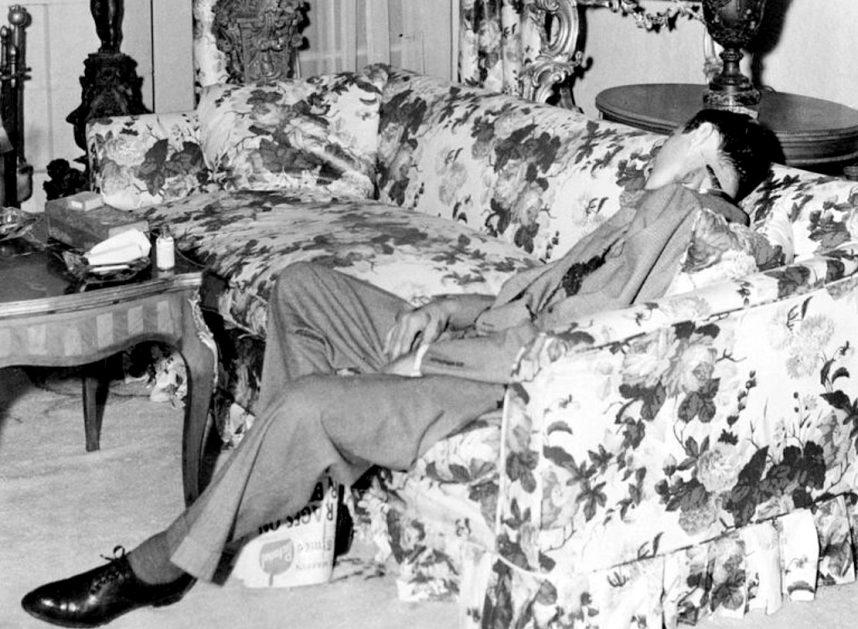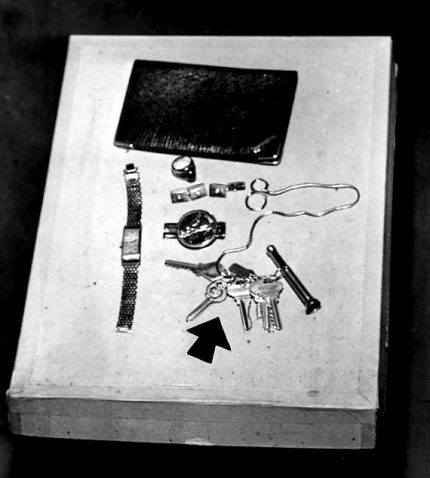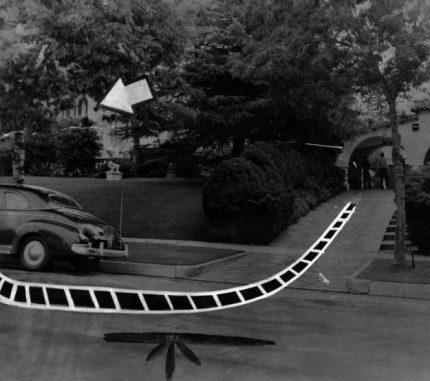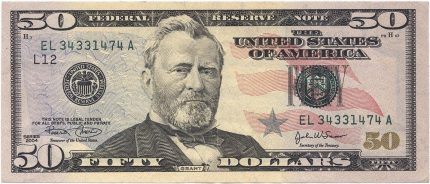VEGAS MYTHS BUSTED: Bugsy Siegel Was Found Dead with Three $50 Bills on Him
Posted on: August 11, 2025, 07:21h.
Last updated on: August 14, 2025, 04:54h.
- Mobster Benjamin “Bugsy” Siegel was shot to death inside his girlfriend’s Beverly Hills home on June 20, 1947
- Reports that three $50 bills were found on Siegel’s body to signify that his murder was, in fact, a mob hit are untrue
After mobster Benjamin “Bugsy” Siegel was assassinated in his girlfriend’s Beverly Hills home on June 20, 1947, police found three $50 bills in his jacket pocket. This fact has become part of the lore surrounding Siegel’s death and a broader superstition explaining why many gamblers refuse to carry or accept $50 bills.

And it’s total BS.

The coroner’s report lists Siegel’s possessions as a billfold, a watch, a money clip, a key chain with six keys, a ring, and a pair of cufflinks (though there was another item, as you can see in the photo at right).
According to the report, Siegel also had $408 in cash on him, which was returned to his family on June 27, 1947.
No, it didn’t provide a breakdown of the bill denominations, or of how much came from his billfold and/or money clip, or whether $150 of it came from three bills tucked into his jacket pocket.
However, $150 in $50s was clearly not the only money found on him.
Even more suspiciously, searches of the 970 million pages on Newspapers.com found no articles combining “Bugsy Siegel” and “$50 bill(s)” until reporter Mark Pilarski’s syndicated “Deal Me In” column of Nov. 29, 2013, suggesting that the myth only emerged recently, though it may have circulated through word-of-mouth for years before that.
“Legend has it that mobsters used to tuck $50 bills in the jacket pockets of victims they buried in the desert,” Pilarski wrote in response to a reader question. “Bugsy Siegel had three on him when he was snuffed out by the mob.”
A Pocketful of Nonsense

Whoever killed Bugsy Siegel is a mystery. The Beverly Hills Police Department still lists the case as open, even though the murderer would now be 98 years old if he happened to be just 20 at the time.
What’s not a mystery is whether Siegel’s murderer placed anything inside one of his victim’s pockets.
Whoever shot Bugsy did not double back to break into 810 N. Linden Drive. And the reason we know that for sure is because we don’t know his name today.
Virginia Hill’s house was chock-full of still-living possible witnesses at the time. They included Allen Smiley (Bugsy’s associate), Charles Hill (Virginia’s brother), Jerry Mason (Charles’ girlfriend), and Eung S. Lee (Virginia’s cook), none of whom was wounded by the targeted gunfire.
More importantly, a window broken by bullets fired from a .30-caliber military M1 carbine rifle (the most likely murder weapon) makes a huge AF noise.

According to reports, neighbors rushed into the street for blocks around after the 10:45 pm ruckus shattered the peace of that Friday night.
And the best evidence any of them could provide was seeing a car speed away whose make, model, and color they couldn’t identify.
Risking capture just to send a message to police was the last thing any good assassin would have done. And what message was it necessary to send anyway?
Let’s assume the folklore is true and that three $50s really were placed into the jacket pockets of murder victims buried by the mob in the desert — even though no legitimate primary sources have ever confirmed this practice.
The bills would have been placed there to let corrupt police know not to ask questions (and possibly to bribe them not to).
But there was no desert burial for Bugsy Siegel, no $50 bills, and still, nearly all original police and news sources, including the LA Times, immediately got the message that his murder was likely a mafia hit.
50 Ways to Lose Your Life

The Bugsy/$50 bills myth may have been conflated with another story tracing back to the Old West.
On Aug. 2, 1876, legendary gunslinger Wild Bill Hickok was killed, supposedly with one $50 bill on him.
However, this also turns out to be a myth.
It was $50 worth of checks (poker chips) that Hickok had on him at the time. And that’s according to Harry “Sam” Young, the bartender of the Deadwood saloon where Hickok was shot in the back of the head by another gambler. (Young provided that detail in his 1915 memoir, “Hard Knocks: A Life Story of the Vanishing West.”)
The myth of unlucky $50 bills, as this 2002 Las Vegas Advisor article explains, likely began with gamblers, especially poker players, long before Siegel’s time. The bill, commemorating President Ulysses S. Grant, was targeted by counterfeiters in the 19th and early 20th centuries, leading gamblers to avoid it to prevent collecting fakes, a superstition that persists in Vegas casinos.
“There’s another, chicken-and-egg, part of this scenario as well,” the article continued. “Partly because they’re considered unlucky, not too many $50 bills are in circulation; hence, they become more unusual and unfamiliar, making them even more suspicious to the superstitious.”
Look for “Vegas Myths Busted” every Monday on Casino.org. Visit VegasMythsBusted.com to read previously busted Vegas myths. Got a suggestion for a Vegas myth that needs busting? Email corey@casino.org.
Last Comment ( 1 )
You will want to correct the date you give for the "Deal Me In" column.